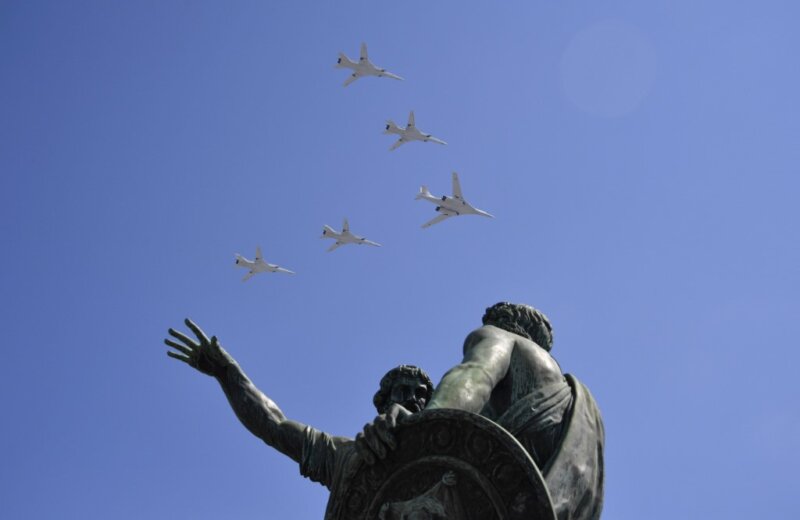Global arms control has grown even weaker as Russian President Vladimir Putin on June 7 signed a bill withdrawing the country from the Treaty on Open Skies.
This is a major international agreement that allows Northern Hemisphere countries to carry out open surveillance flights over each other’s territories and check out each other’s military forces. The document Putin signed, which contains just one sentence in its main body, effectively brings Russian participation to a close.
The United States withdrew from the treaty in late November, citing numerous Russian violations reported years before.
In addition to the downfall of the Intermediate-Range Nuclear Forces (INF) treaty in 2019, this is yet another blow to the post-Cold War détente in Europe and the Northern Atlantic.
Here’s what you need to know about this paramount agreement and why it was important to global peace.
What is special about this treaty?
The agreement comes out of the idea that nations should have a chance to openly observe each other’s military capabilities and be aware of military activities and preparations. In theory, this would enhance mutual trust and help prevent escalations and hostility.
U.S. President Dwight D. Eisenhower first proposed it to the Soviet Union during the Geneva Conference in 1955. But, as expected, Moscow turned the proposition down.
The idea was revived in the late 1980s when the Cold War was drawing to a close and the Soviet bloc was crumbling. Following negotiations, the Treaty on Open Skies was signed in 1992 in Helsinki by the U.S., Canada, Russia, and most European countries, including Ukraine.
It took 10 years for the treaty to finally enter into force. All member states, predominantly the U.S. and Russia, have carried out a total of over 1,500 surveillance flights within the following two decades.
How does it work?
The treaty strictly regulates how these flights are carried out. Participants must use certain types of unarmed observer aircraft, use certain, pre-agreed entry points, airfields and flight paths. The U.S. Air Force used the Boeing OC-135B Open Skies jet, modified to comply with the treaty. Russia also run a special version of the Tupolev Tu-154M, while Ukraine used its famous Antonov An-30s.
The inspector aircraft were supposed to only carry certified recording equipment: photo- and video cameras with the resolution capacity of no more than 30 centimeters, infra-red scanners of 50 centimeters, and synthetic aperture radars (which can create 3D landscape models) of 300 centimeters.
What’s important is that the equipment used in the flights must not be unique — it must be commercially available to any of the treaty’s member states. This provision is meant to bar militaries from abusing the treaty for the sake of outright espionage.
The treaty covers the entirety of member states’ sovereign territory, and a host nation cannot simply decline an overflight request except for aircraft safety reasons. But host nation representatives are entitled to be present on board.
The surveillance was especially beneficial for militaries that do not operate advanced spy satellites. Moreover, the treaty gives the green light to member states sharing surveillance data with one another.
In theory, this system was supposed to keep military activity transparent and prevent misunderstandings between nations that might lead to escalating crises.
What went wrong?
In reality, the system started breaking down after the 2008 Russian-Georgian War, as Russia found more and more ways to violate the treaty.
By 2012, Georgia decided to cease its treaty obligations towards Russia, which occupies 20% of the country’s territory. The system started crumbling as Russian power expansion escalated following the 2013-2014 Euromaidan Revolution in Ukraine.
Shortly following the Russian invasion of Crimea in early 2014, the U.S. intelligence community reported that Russia made operational its most advanced surveillance aircraft, Tupolev Tu-214ON, specifically for inspecting the U.S. territory. The intelligence suggested that the airplanes could be modified to carrying uncertified observation equipment. The U.S. government in April 2014 decided to ban the aircraft from Open Skies flights over American soil.
By 2019, the U.S. government had had a long list of complaints regarding Russian violations.
In a May 2020 statement, then-U.S. Secretary of State Mike Pompeo accused Moscow of weaponizing the treaty and using the surveillance flights for “targeting critical infrastructure in the United States and Europe with precision-guided conventional munitions” rather than seeking confidence and mutual trust.
In particular, America’s top diplomat said Moscow had refused U.S. overflights near Abkhazia and South Ossetia, the breakaway parts of Georgia occupied by Russia, which formally deems them as independent states.
Russia also suggested that U.S. aircraft use airfields in occupied Crimea, which was totally unacceptable to any nation refusing to recognize Russia’s sovereignty in the Ukrainian peninsula. Moreover, according to Pompeo, Russia also denied U.S. surveillance over the Kaliningrad Oblast, an isolated enclave bordering Poland and Lithuania, which hosts Russian tactical nuclear weapons.
In September 2019, the U.S. and Canada were denied access to an overflight in Central Russia.
The U.S. responded by revoking Russia’s permission to conduct surveillance in Hawaii (which hosts U.S. Pacific Fleet) and Alaska, which bears important missile defense infrastructure.
Eventually, the U.S. pulled out of the treaty on November 2020, six months after the administration of U.S. President Donald Trump announced American withdrawal, citing Russian violations.
The Russians at first pledged to stick to their obligations towards other member states.
But Moscow eventually withdrew, saying that it doesn’t want European nations to share their surveillance data with the U.S.



